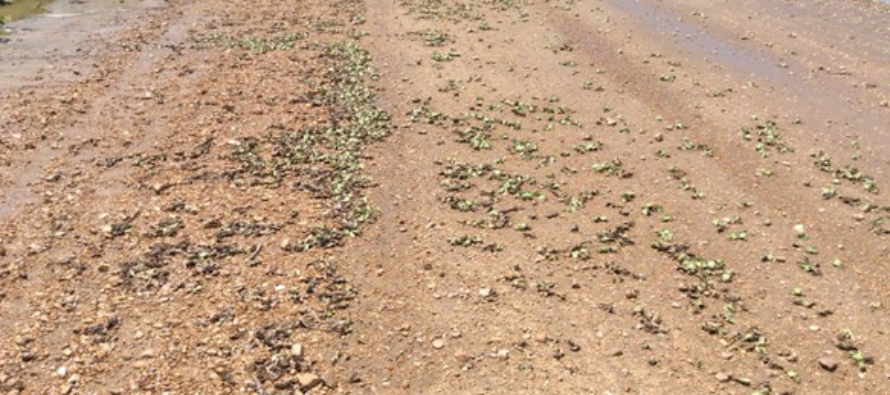Cotton Fruit Shedding – 3 Weeks of Pain

Related Articles
- Fertilizing Cotton with Poultry Litter 5
- Mississippi Cotton Insect Situation of 2010: A Look Back 3
- Bayer CropScience-O.A. Cleveland Weekly Cotton Commentary 0
Latest Tweets
Cotton in many areas of the state has been shedding fruit for the past two to three weeks. Prior to the onset of this shed, many fields were retaining greater than 90% of the total fruiting forms. First and foremost, under most circumstances we will not retain 90+% of the total fruitload. Having said that, some level of shed was expected although it has been greater than anticipated in some cases. There are numerous reasons that a cotton plant will shed fruit including insects, disease, nutrient deficiency, weather, and overall fruitload. Typically, insect damage will result in shedding of all size squares and occasionally small bolls. However, environmental stress is often the cause of small bolls but not squares. Keep in mind that physical shedding typically occurs several days after the event that actually caused the shed.
The image below was provided by Tucker Miller and demonstrates fruiting forms shed and piled up at the end of a field.
In cases where the fruitload was very heavy, the plant simply may not have been able to produce enough photosynthates to meet the demand of the existing fruitload. In addition, sunlight (or lack thereof) can have a dramatic impact on shed. Over the past three weeks cloudy, rainy weather has been common in many areas of the state. During periods of cloudy weather, production of photosynthates is restricted which can result in shed of young bolls. Essentially, the plant will direct food to those bolls in which it has already directed time and energy and shed those that it has not.
High temperatures and/or humidity worsen the situation when cloudy weather is present because the plant is consuming more stored photosynthates. High nighttime temperatures can exacerbate this situation because the plant is working harder to cool itself which is using additional stored photosynthates. When soils become saturated with water, oxygen content is reduced which may result in reduced photosynthate production and subsequently, fruit shed occurs.
In cases where soil moisture has been deficient and rainfall and/or irrigation occurs, shed is commonly observed. The lack of soil moisture (not the case in most areas for the past three weeks) is usually the cause of the shed; however, the shed is not noticed until fruit piles up and the end of the water furrows after rainfall or irrigation. Disease can result in fruit shed; however, this tends to be less common than other reasons. Indirectly, disease can cause fruit shed if the disease results in defoliation of leaves that are supporting young bolls. In this case, photosynthate supply is cutoff due to defoliation and young bolls may abscise due to lack of food supply (for lack of a better term). Finally, a thick, lush canopy can induce shed as light penetration is reduced which results in reduced photosynthate supply.
Plant nutrition can affect shed as well. In situations where leaves are deficient in a given nutrient(s) to the point that productivity suffers, the plant may shed fruit due to it’s lack of ability to feed developing fruit. We generally do not recommend foliar feeding of plant nutrients as a consistent return on investment has not been demonstrated.
Things to consider to reduce potential shed (in addition to typical insect management practices) include preventing rank growth, do not apply excess nitrogen, and do not over irrigate. While fruit shed has been observed throughout the state for the past three weeks, yield potential remains good in most places.





Let me tell You a sad story ! There are no comments yet, but You can be first one to comment this article.
Write a comment